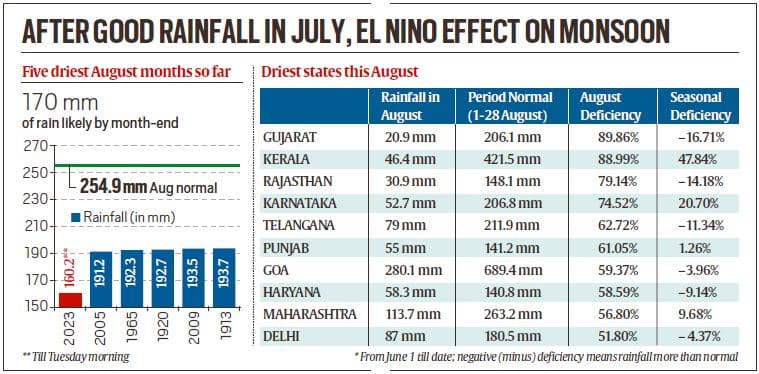Free Courses Sale ends Soon, Get It Now


Free Courses Sale ends Soon, Get It Now



Disclaimer: Copyright infringement not intended.
Context
India's monsoon weather patterns and their impact during the months of August and September.
Details
Driest August on Record
El Nino Impact
Regional Variances
Possible Monsoon Revival
Reservoir Levels and Concerns
Impact on Crops
About El Nino
Causes of El Nino
Key Characteristics of El Nino
Impacts of El Nino
On Weather Patterns
On Agriculture and Food Security
On Ecosystems
On Economics
El Nino's Counterpart: La Nina
Prediction and Monitoring
|
PRACTICE QUESTION Q) Discuss the causes, characteristics, and global impacts of El Nino, and elucidate the strategies that governments and organizations can adopt to mitigate its adverse effects. (150 words) |
https://indianexpress.com/article/explained/explained-climate/staring-at-driest-ever-august-8915316/
© 2024 iasgyan. All right reserved